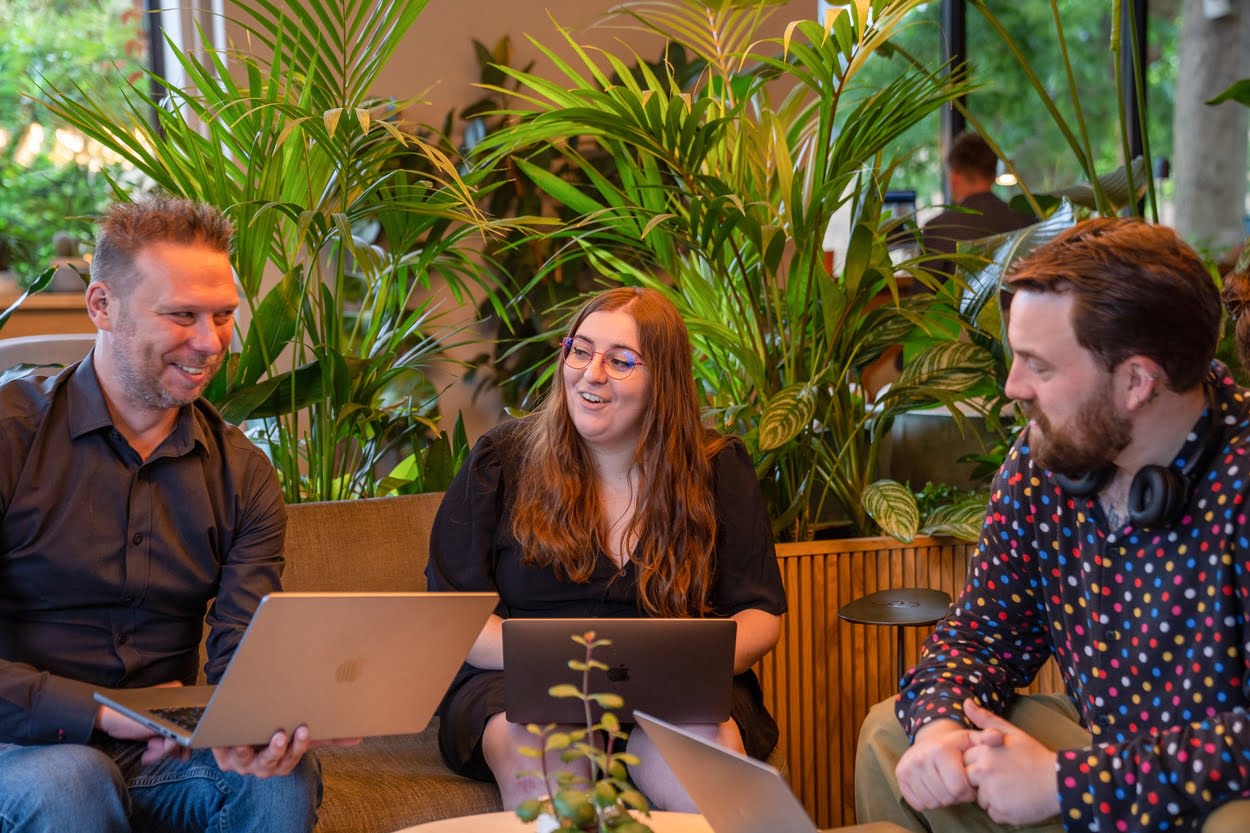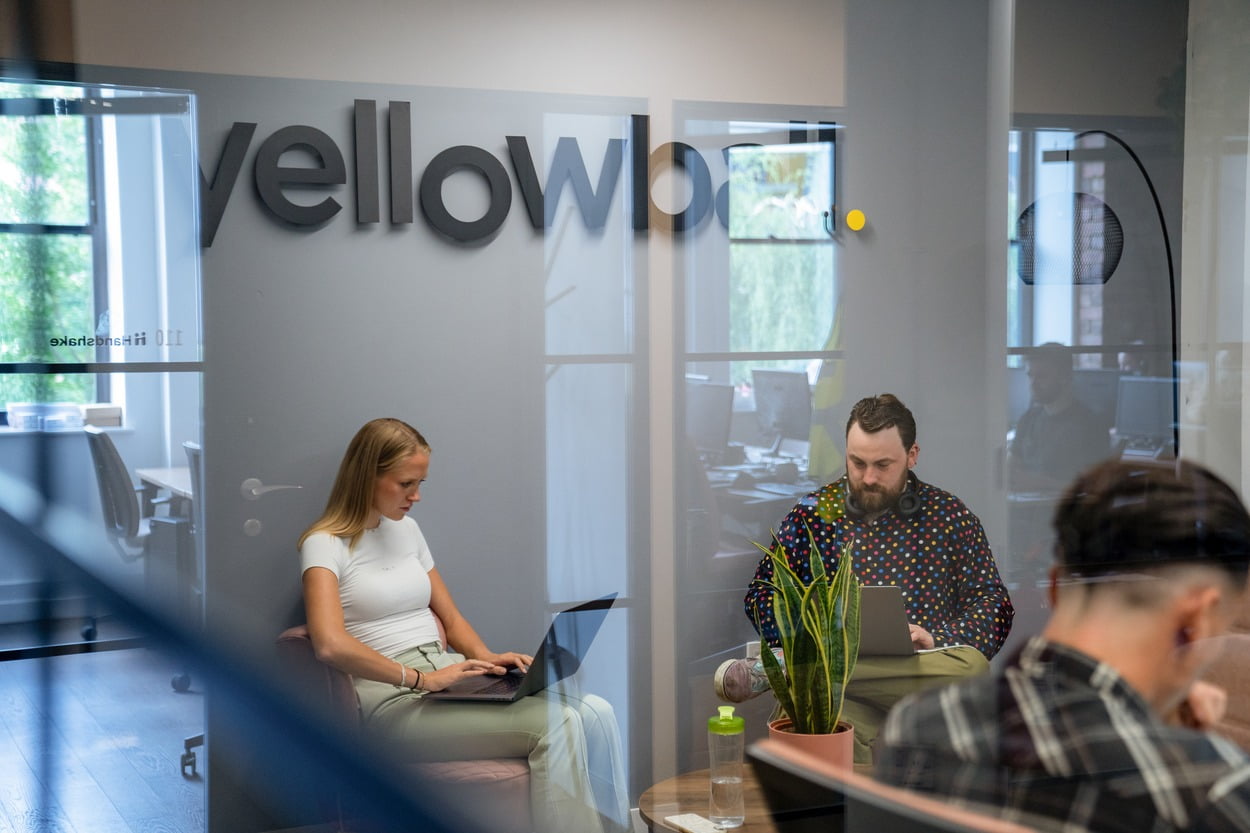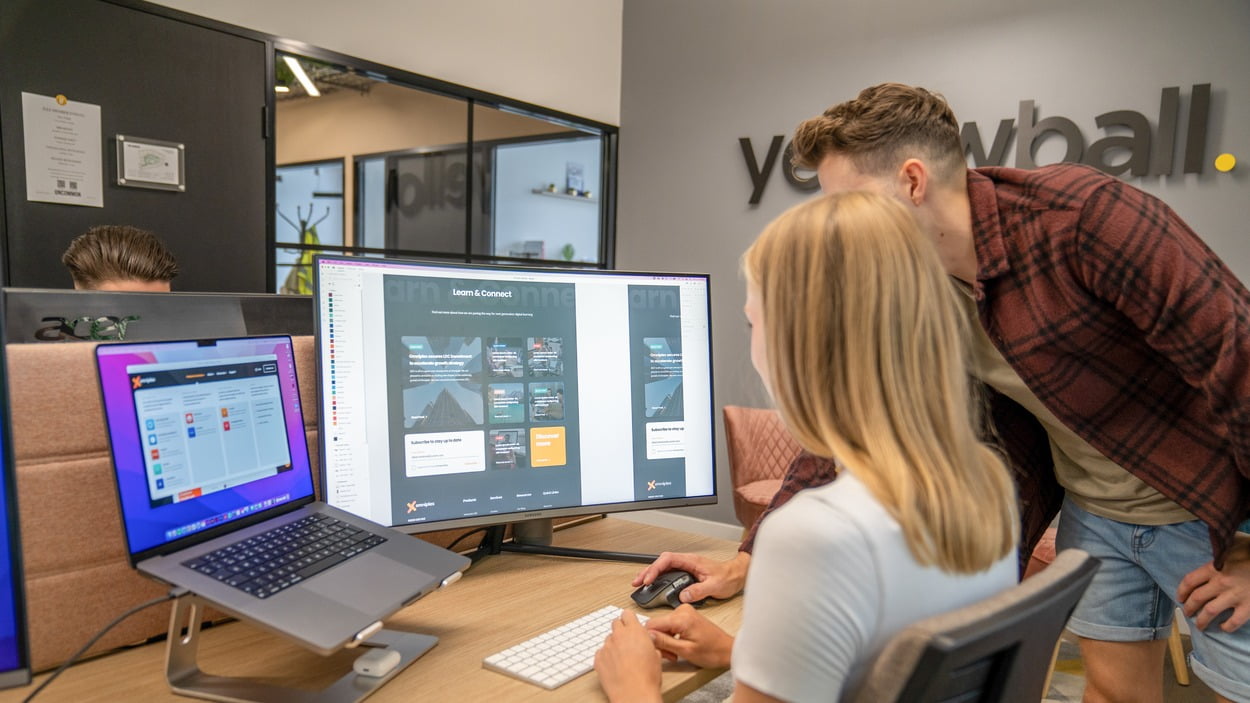The shift towards mobile-first internet browsing has taken another step forward with two recent updates from Google. The first being a change in the way Google search results are displayed on mobile devices, and the second being that as of July 1st 2019, Google will begin mobile-first indexing for new websites.
Here at Yellowball, we pride ourselves on bringing you the latest developments in the world of internet search. Read on for our rundown of what the latest Google updates mean for you and your website.
Changes to mobile SERPs
Google’s new search results are being displayed slightly differently on mobile devices as of a few days ago. The URL and favicon of each search result are now displayed at the top of the ‘card’, and the page title is displayed below it. Note that in order for Google to display your favicon, you must add a <link> tag in the header, exact details can be found here. Also, URLs are no longer shown in green, but in grey instead.
Source: https://www.blog.google/products/search/new-design-google-search/
By placing the emphasis of search results on the URL and favicon, a website’s branding is now more prominent, and this is to help users better understand where their search results are coming from, and ultimately where they will be directed to if they click. In a world of ‘fake news’, recognisable and trusted web sources are more important than ever.
Google is changing the way Ads are displayed too; instead of having the word ‘Ad’ in a green box (that almost blended with the URL at a glance), it will now be in the place of favicons within the search results. This, again, is an effort to make each search result and its origin clearer to the user. It’s worth remembering that Google has been fined in the past by the EU because of a lack of clarity between ads and organic search results, so it’s in their best interest to preserve their advertising platform – especially since it accounts for over 80% of Google’s revenue.
PPC campaigns are likely to be affected by this change. If Ads are more obviously displayed as Ads, searchers may be more inclined to avoid them in favour of an organic result. Ads will lack favicons, and therefore the brand familiarity of organic results which may affect a searcher’s trust in these results. While this is speculation for the time being, it’s likely that the top organic results on a page will enjoy a higher click-through rate than they have previously. SEOs and PPC marketers should keep a keen eye on any changes in traffic over the coming weeks. Let’s keep in mind that Google is unlikely to steer users away from ads altogether, after all, clicks on ads is how they make their money!
Overall, this update aims to deliver a richer, more colourful SERP. Google has also said that this change will pave the way for search pages displaying more types of content, and having more action buttons and previews, meaning users should be able to find what they’re looking for more quickly. Google has taken steps in the past few years to compete with other industries directly within its search pages, with features such as Google Flights, Google Jobs, and even good old Google Translate. Search pages now also reveal instant answers to many queries in the form of featured snippets. The revamped SERPs will only serve to strengthen Google’s hand as they branch out to tackle other industries. Good for Google, not great for industry-specific websites.
This update will be coming to desktops soon, but for now it has only been rolled out on mobile devices.
Mobile-first indexing
We’ve covered mobile-first indexing in previous blog posts so you can read about it more generally here. In short, Google’s latest announcement means that Google will use the mobile version of a website, rather than the desktop version, when indexing and ranking websites on its SERPs. Note though that this also depends on whether a searcher is using a desktop or a mobile device when searching. From July 1st 2019, for all new sites, which Google describes as being either new to the internet or previously unknown to Google Search, mobile-first indexing will be enabled by default.
What does the update mean for established websites?
Older, established websites (i.e. those already indexed by Google) are advised to take action to ensure their site does not suffer in the SERPs. Different websites require different actions to be taken in order to be seen as ready by the powers that be (Google). Google has said that they will notify website owners via Search Console as soon as their website meets the requirements. You can also use the URL Inspection Tool in Search Console to see how Google currently crawls your site.
How do I get my website ready?
In many cases, no action is required. For example, if your website incorporates responsive web design, whereby the website adjusts based on screen size, then no action is required to cater for mobile-first indexing.
If you only have a desktop version of your website (i.e. no mobile-friendly version), then the mobile version will be the same by default. That being said, having a website without a mobile-friendly version in 2019 is highly ill-advised. As we’ve mentioned, the majority of web users are on mobile devices, and ignoring this will result in poor (putting it mildly) rankings on SERPs and a substandard user experience.
You will need to take action in order to be eligible for mobile-first indexing if:
- your website has separate URLs for desktop pages and their mobile equivalent (m-dot)
- or your website serves dynamic content (content that differs depending on the visitor’s device)
In these cases, ensure your mobile site and desktop site have the same content. This includes not only text, but images and videos. The last thing you want is Google skipping over key content and features of your website because it’s on the desktop version and not the mobile version. The same goes for all pieces of onpage optimisation.
For websites with separate URLs for desktop and mobile pages, you’ll need to verify both versions with Google’s Search Console. Generally speaking, however, Google favours websites that take the aforementioned responsive design approach rather than using separate URLs. You can view Google’s full advice here.
In the ever-changing world of Google search, we’ll be sure to bring you all the latest news. If you have any questions or comments, feel free to get in touch with us at 0203 176 7662 or drop us an email. We’d love to hear from you.

















